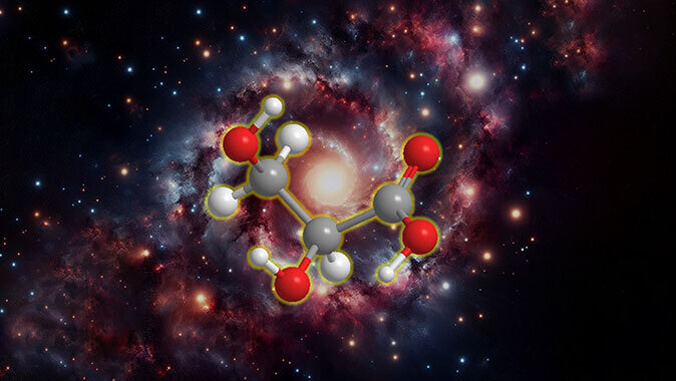
A critical molecule for the metabolism of living organisms has been synthesized for the first time by University of Hawaiʻi at Mānoa researchers at low temperatures (10 K) on ice coated nanoparticles mimicking conditions in deep space marking a “cool” step in advancing our understanding of the origins of life.
The UH Mānoa Department of Chemistry team of Professor Ralf I. Kaiser, and postdoctoral fellows Jia Wang and Joshua H. Marks worked with computational chemist Professor Ryan C. Fortenberry from the University of Mississippi to explore how glyceric acid can form in cold, carbon dioxide-rich icy environments of outer space. Glyceric acid is the simplest sugar acid that helps with a process called glycolysis, which is like the engine that helps break down the food we eat into energy that our bodies can use.
Using experiments with interstellar model ices and proxies of energetic Galactic Cosmic Rays at the UH Mānoa’s W. M. Keck Research Laboratory in Astrochemistry, racemic glyceric acid was formed and detected with the help of photo ionization lasers in the gas phase. These molecules might play a role in the development of life on planets like Earth. Scientists now hope to detect these molecules in space using telescopes such as ALMA.
“The study suggests that molecules like glyceric acid could have been synthesized in molecular clouds and possibly in star forming regions prior to their delivery to Earth via comets or meteorites thus contributing to the building blocks of life,” Kaiser said. “Understanding how these molecules form in space is crucial for unraveling the mysteries of life’s origins.”
“The potential presence of such molecules in space shows how the chemistry in our bodies is connected to the chemistry of ‘the beyond,’” Fortenberry said. “Additionally, the interaction of experiment and computation also highlights how different perspectives on science work together to make the generation of new knowledge possible.”
The study was published in Sciences Advances on March 13.